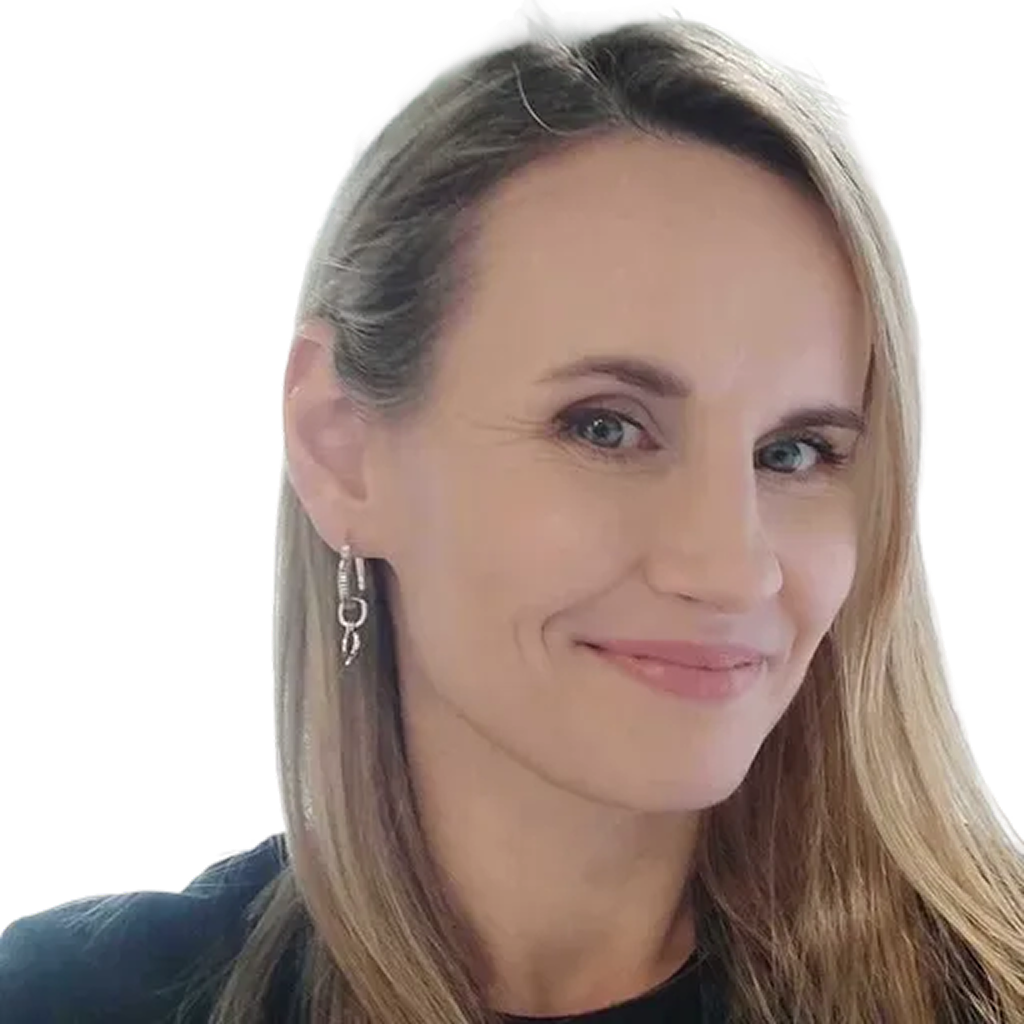Personal productivity and time logging relation: best tips


The pain of working all day with no clear effect of hours spent is depressing. The combination of work with no clear meaning and shrinking personal time is a short road to burnout. That’s where personal productivity comes in glory. Maximizing personal productivity is the goal of anyone who wants to boost productivity and feel less overwhelmed by daily tasks.
The internet is full of contradictory narratives of maintaining work-life balance and applying sophisticated tricks to max-out the work productivity. One gets confused when resting about power-naps and dietary supplements that boost mental efficiency. On the other hand, one needs to spend time with significant ones, eat well, exercise, or sleep enough to stay healthy. These are also examples of personal productivity goals that reflect a broader personal growth strategy.
And all these activities are off-work. Thus, the only way to keep succeeding in work while staying satisfied with personal life is to maximize personal productivity. A reliable personal productivity system or productivity method can help align these priorities.
What is personal productivity?
Personal productivity (or personal efficiency) is a self-explanatory term itself. It is about being productive in work-related meaning. Getting back to basics – productivity is the ability to deliver an effect during a certain period of time. Productivity levels vary greatly depending on personal productivity skills and your ability to prioritize important tasks.
The term can be applied to individuals, organizations, or nations. In fact, the ability to reach high productivity is one of the most significant factors in building wealth on a national level. It defines productivity across both personal and economic dimensions.
For example, the Eurostat data implies that the relation between the time worked, and the GDP per person is directly opposite. Nations with the longest hours worked a week get the worst results, with Turkey employees working for over 45 hours a week and delivering $9,042 GDP yearly. On the other side, there are employees from the Netherlands who deliver $52,447 of GDP yearly while working only for 30.4 hours per week. This proves that the number of tasks and hours of work are not as essential as optimizing how you spend your time.
So it is clearly not about working hard – it is about working effectively. Doing all accounting with pen and paper is undoubtedly hard, but hardly as effective as doing that with Excel. Productivity apps and AI tools now make it easier than ever to streamline workflow and get more done in less time.
The wealth of individuals
The concept of personal productivity is narrowed to a particular individual, with all the respect for his or her goals, priorities, and needs. So it does not matter if it is all about a stay-at-home mom, a freelance graphic designer, an office worker, or a high-level manager – each of them can be both productive or slacking.
The key is knowledge about managing personal tasks and maximizing time efficiency. That’s why enrolling in a personal productivity course or using a personal productivity tracker can offer actionable insights and help prioritize what truly matters.

What are the benefits of personal productivity?
First and foremost, personal productivity is about maximizing the outcome of the assets one has, with time being the most valuable of them. Why is that? Because there is no way to get it back, manage to have it more, or save for the future. From this perspective, the benefits of being productive on a personal level include:
- More time to allocate – if the productivity is about delivering more stuff in a shorter time, there is more time left for things that used to be cut off. Sleeping, meetings with friends, working out, or basically, whatever one wills to do with his or her spare time. Tip: Time blocking and task management apps help you optimize your productivity and structure your workday effectively.
- More things done – the greatest disappointment of being a grown-up is the constatation that tasks to do never end. On the other hand, though, doing things faster and more efficiently enables one to get better effects – bigger paycheck, chores are done – you name it. Personal productivity examples include cleaning the garage, writing a blog post, or completing tasks using a digital to-do list.
- Reduced stress – the relationship between stress and productivity is, according to the International Journal of Environmental Research and Public Health, pretty straightforward – the higher the stress is, the lower is the productivity. In this cursed circle, the things that remain undone create pressure that makes delivering them even harder. On the other hand, delivering results reduces the stress level and makes working faster and more efficiently easier. So being productive makes one less stressed, and in the end – healthier and more productive. Turn off notifications and set blocks of time when energy is at its highest to stay focused and avoid burnout.
Considering the benefits listed above, it is not surprising that there are so many guides and manuals about achieving productivity, be that the Getting Things Done system or Pomodoro technique. But there are essentials that can be found within any system one wills to use. These productivity systems motivate users to take action and achieve their desired outcomes. But there are essentials that can be found within any system one wills to use.
How to increase personal productivity
Building and maintaining personal productivity can be compared to staying fit – beginnings are hard, yet there are immediate effects that can be wonderful, especially for a non-productive person before. Yet, there is no “finish” in this run. One needs to constantly keep an eye on the process. However, essential tips for being productive include: use personal productivity tips and time management techniques to stay consistent.
Have a right tool stack
And “right” is “right for you”. There are dozens of task managing solutions, tools supporting multiple productivity-boosting heuristics, and other digital ways of delivering better results. Moreover, there are notebooks, Kanban offline boards, whiteboards… — the list has no end in fact. Finding the right productivity tools allows you to focus on what matters most.
If one feels better with pen-and-paper lists, it is cool. Equally cool as building a to-do list every day in the email and sending it to the own mailbox.
The key is in spotting the tool that supports managing things to do, which is usually built around lists. A popular Getting Things Done (GTD) system recommends a particular way of building the list, while not recommending a tool.
Storage system
The key feature of the tool is the system that needs to keep all things to do – and it is not the user’s head. The ever-accessible and complete storage system can be a notebook, a sheet, Asana, or Trello board, or basically anything that supports making the list.
To be honest – if one is cool with writing down the list of chores on the backside of envelopes – it is good as long it works. Even though, at some point, one would need a big stack of envelopes.
The best systems provide actionable insights based on activity tracking and clear prioritization. Writing down things to do is the first step toward personal productivity. It also makes the mind free – a great feeling itself.
Also – the key in achieving personal productivity is to name all the things that are to be done. It doesn’t matter if it is about delivering a presentation to work, finding a better tutor for a child, or cleaning up the garage – there is a lot of time to get back from the void of slackery.
Learn to set goals and name actions
“A journey of a thousand miles begins with a single step” LaoZi, Dao De Jing (attributed also to Confucius)
Having the first step of writing the list down behind, the next comes in – reforging “things” into goals and actions. A “thing to do” can be “do grocery shopping for next week”. Reforging that into goals and actions is a more sophisticated process. So, in fact, “grocery shopping” can consist of:
- Planning meals for next week to know what needs to be bought
- Updating the list of owned food, to not duplicate owned food
- Building a list of things to buy
- Blocking and planning the time (and later doing it)
Although the list divided into single actions can be of daunting length, the actions themselves are usually short to do. One is typically surprised how swift can be, delivering the tasks that used to be overwhelming without planning. Time upfront leads to peak productivity and better project management. It is like eating a whole table of chocolate piece-by-piece – one never expects it to end so fast. That’s why a to-do list for a productive day boosts work satisfaction so much.
Set priorities
Ok, so having all (or at least most of) things sliced into manageable pieces, leaves one with a swarm of tiny tasks – nearly as overwhelming as it used to be before. According to the GTD principles, the next step is to ask:
What is the thing I should do next?
Which important tasks should I prioritize next? Setting priorities is the next aspect of personal productivity. When considering how important the task is, one should think about:
- Estimated time of delivery – how long is the task going to last? If it is about an entire day of the trip or several hours in a row, there can be the need to block a time, especially for this particular task. On the other hand, though, there are plenty of tasks that take no more than a few minutes, so a separate list with the “pick-one-to-do-now” types of tasks can be a good idea.
- Deadline – pretty straightforward. The closer the deadline, the higher the priority.
According to the multiple guidelines with GTD in particular, it is advised to deliver many to-do lists depending on the priorities. A “wishlist”, “to do in near future”, “near deadline” and so on, depending on the type of thing to do and the nature of the project – personal, professional, creative, etc.
Time logging
Here comes the bottleneck. While building lists and executing them is widely covered, time logging is often overlooked, yet crucial. Using a personal productivity tracker or time tracking software helps you track your time by category—a key step if you want to optimize your productivity and get more done.
While time logging in a professional field is popular, doing that in every aspect of life can be considered an oddity. When it comes to work, time tracking delivers benefits both for salaried and hourly paid employees. It makes invoicing clients easier, reduces productivity leaks (by up to 80%!), and delivers transparency in the workplace productivity context.
But tracking time spent with family and friends? Sleep? Scrolling through social media? Actually, it is a tool to optimize your productivity on a personal level. One needs not to abandon all these activities, but to figure out which one of them is stealing work hours. Timeboxing and a clear planner help you prioritize tasks and avoid procrastination.
If one uses time tracking software like Calamari in his or her workplace, transferring this habit into a home-related field can be easier than thought—it is just about extrapolating a professional habit into private space, a perfect example of personal productivity tools supporting personal growth.
Categories
Time tracking requires building a set of categories in the same way professional time is sliced into projects and tasks. When it comes to personal life, activity tracking can bring clarity and self-awareness. It requires asking:
- Where would you like to allocate more time—work? family? art projects? traveling? sleeping? exercising?
- Where do you think you allocate your time now—work? family? social media? Netflix? sleeping? commuting?
In the end, there can appear categories you never realized were time sinks. A well-structured productivity system—digital or analog—keeps track of daily tasks and completed tasks, showing where you spend your time and helping you get stuff done.
Time review – for how long you really work?
Benjamin Franklin, famous for “Time is money,” used a strict daily routine for time control. You don’t need Franklin-level discipline, but time management techniques like regular reviews and making a list of categories help track your time and uncover inefficiencies.
After a week of tracking time, it’s time for a review. You’ll compare time spent on work versus downtime, and adjust your schedule. If everything looks good, that’s great. If not, prioritize better and realign your agenda.
In the ideal world, one would achieve 100% accuracy on things done, but it is impossible and would be wearing. On the other hand, delivering “good enough” accuracy can be sufficient.
Spot the bottlenecks and sinks
Assuming the honest time tracking (if it is not honest, it is better to not do that at all), one can analyze his or her daily routines. Confronting the real-time allocation can be painful, sometimes surprising, but always enlightening. One can get information on matters like:
- For how long do I really work (and I mean work, not “sit in the office or near the computer) – isn’t the overworked specialist narrative only an excuse for slacking and wasting time?
- Which time I consider wasted – according to Oberlo’s research, a typical user spends three hours a day using social media. Is it really necessary to use Facebook for the 12% of the daily time we have at all?
- What am I doing too much – assuming the ability to put a value on a particular time spent, one can see if there is some time over-allocated in a particular category. Is checking email really that essential for work? Are these phone calls really necessary? If running a garden delivers only stress and consumes a lot of time, abandoning that can be a good choice. Having flat grass near the house is not a shame and requires significantly less effort.
- What am I not doing enough – on the other hand, though, there is no way to have a great garden when caring about it for less than 15 minutes a week. Transferring the time considered wasted or ill-allocated into more meaningful things is the sole purpose of personal productivity.
Data gathered, knowledge extracted. Time for the last step.
Observe, learn, react
At that point, one has a clear view of:
- Things done – based on lists of things to do and tasks to accomplish
- Time allocated – how much time one has spent on delivering results listed above
- Goals achieved – how many tasks from particular categories have been achieved and how closer one is toward accomplishing a more high-level goal.
If everything is OK at this level – that’s cool. There is something to change? One can manage the process with collected data and setting proper goals to support a long-term vision. If one writes a novel, he or she needs to allocate at least an hour a day to secure the required time.
Learn to avoid distractions
Finally, having all projects and tasks listed and a time tracker right at the fingertip, one is ready to focus on doing a single task at once. Multitasking is an attractive yet harmful myth. According to Stanford research, multitaskers are better at organizing and managing information, yet that’s the only benefit.
With more than one task at once done, cognitive functions drop significantly, rendering one nothing more than just able to do several tasks at once rather than do them greatly.
It is sometimes impossible not to multitask, but this practice should be avoided. Setting a queue of tasks to solve and then shooting them one-by-one while staying focused is a much more productive approach than trying to be a multi-handed Hindu goddess of productivity.
Conclusion
Time has neither mercy nor compassion – it flows, no matter how desperately one needs more sleep, spare time, or working time. It is impossible to manage it in the way other assets are manageable. Storing it for the future or multiplying by a good investment is no more than a fancy metaphor. Yet without time tracking, there is no way to manipulate the efficiency at all.
The best answer to the question about how to get productive is to squeeze owned hours to get the best of them. And that’s what personal productivity is really about.
If you enjoyed this article and wish to discuss clock in and time tracking in productivity-boosting techniques, don’t hesitate to contact us now. We will be happy to share our experiences and remarks as much as to hear yours.
FAQ – Personal productivity and time logging relation: best tips
1. What is personal productivity, and why does it matter?
Personal productivity is about how efficiently you use your time to get things done. It directly impacts the quality of your work, your growth and professional development, and helps you achieve your goals.
2. What are the best tips to increase productivity during the day?
Use time blocking, avoid multitasking, and work on important tasks first thing in the morning when your energy is high. These productivity tips help you stay on top of your responsibilities.
3. How can I increase my personal productivity without overworking?
You can increase your personal productivity by identifying your biological prime time and planning tasks around it. Focus on ways to improve your workflow, not just doing more.
4. Which productivity methods actually work?
Methods like Pomodoro, GTD, and time management techniques are proven productivity methods that support a system that works. They help you prioritize, organize, and stay consistent.
5. What tools should I use to optimize my productivity?
Personal productivity tools like digital to-do lists, planners, or sticky notes can support any method you choose. The key is to pick the tool that helps you optimize your productivity and stay consistent.
6. Why is understanding your biological prime time important?
Your biological prime time is when your energy peaks, allowing you to boost productivity and deliver your best results. Use this window to tackle the most important tasks and get things done faster.
7. Can optimizing my work environment help increase productivity?
Yes—your work environment affects your ability to stay focused and perform effectively. A calm, well-organized space helps you become more productive and maintain higher productivity and performance.
8. How does time logging help with productivity work?
Tracking time helps identify unproductive patterns and improve productivity at work. It enables employee productivity to be measured and refined over time.
9. What are current productivity trends I should know about?
Modern productivity trends emphasize async work, wellness integration, and smart productivity tools like AI. They're driven by the need to increase productivity while protecting mental health.
10. What should I do if I find myself procrastinating?
When you find yourself procrastinating, break your goals into smaller actions and look at the big picture. This builds momentum and helps you achieve your desired outcomes more efficiently.


















